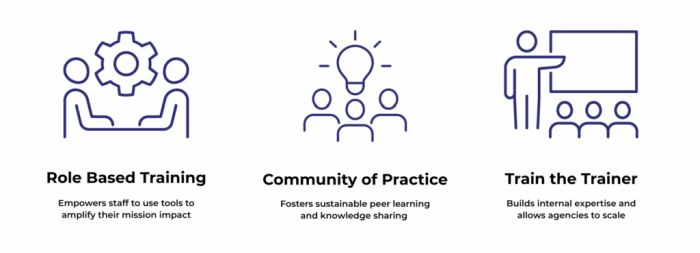- within Technology topic(s)
- in United Kingdom
- with readers working within the Technology industries
- within Technology topic(s)
Despite the promise of artificial intelligence (AI), fraud detection doesn't start with algorithms—it starts with people. AI is a powerful tool in the fight against fraud, as described in our first post. But it's only as effective as the humans who use it. No matter how advanced a system may be, its success hinges on people trusting, applying, and understanding it. For agencies striving to detect and prevent fraud, waste, and abuse, that means one thing: designing solutions with people in mind.
In our second post on Pillars 2 and 3, we explored the technical architecture behind proactive fraud detection: scalable data pipelines, machine learning models, and real-time analytics. But even the best-built system can fall short without trust, transparency, and usability. Investigators, auditors, analysts, and program staff need to understand the data to act. That's why successful agencies prioritize human needs alongside technical capabilities. By putting people first, they're not just implementing smarter systems; they're building stronger, more resilient programs.
In this final post of this series, we'll look at Pillars 4 and 5. This article explains how usability, explainability, and thoughtful implementation drive adoption—and why a people-centered approach is essential to the future of fraud prevention.
Pillar 4: Simplifying Investigations with Intuitive Visual Analytics
Successful fraud prevention systems are built on a simple but powerful principle: make complex data usable. It's not enough to simply generate insights; those insights must be intuitive, accessible, and actionable. Investigators need the ability to ask better questions, identify anomalies, and act decisively. That's where intuitive visual analytics come in—and where thoughtfully designed platforms make a difference.
Modern platforms go beyond static reports to include interactive dashboards tailored to user roles. As referenced in our Pillar 1 post, the U.S. Department of Health and Human Services' (HHS) Office of the Inspector General (OIG) is tasked with oversight of a portfolio worth more than $1 trillion. Its Contracts and Grants Analytics Portal (CGAP) is human-centered, as it offers tailored views for auditors, investigators, and analysts. In turn, each user can access relevant fraud indicators and investigative leads without sifting through chapters of data.
Dynamic filters allow staff to slice through complexity as well. Analysts can filter CGAP data by funding mechanism, geography, or time period to isolate patterns in suspicious grant allocations or contract overlaps. Built-in reports automatically surface high-risk indicators too. Whether it's identifying a suspicious cluster of payments or uncovering hidden relationships between contractors and subgrantees, visual context turns abstract patterns into clear stories. Investigators can spot outliers at a glance, zoom in for details, and pivot their focus as new questions emerge—without needing to sift through volumes of reports.
Pillar 5: Building Human-Centered Systems from the Beginning
Usability isn't just a design feature. It's a mindset. Impactful systems are human-centered from the start, with user experience (UX) design grounded in real-world workflows and user behavior. It's important to embed directly with users to understand their challenges. These insights inform everything from the layout to the functionality of the interface. A user-first approach also supports internal champions and builds continuous feedback loops.
Training and proactive change management are also key components of human-centric design. Role-based training tailored to specific job needs empowers staff to use tools in ways that amplify each person's impact on the mission. Many successful agencies also invest in communities of practice that foster peer learning and knowledge sharing. Additionally, by implementing train-the-trainer programs that build internal expertise, agencies can leverage their people and systems to scale fraud prevention efforts.

The Bottom Line
At Excella, we believe that AI should elevate human judgment, not replace it. That belief shapes every stage of our work—from system design to implementation to training. We build human-in-the-loop systems that combine technical excellence with human insight, enabling adoption, usability, and impact from day one.
The content of this article is intended to provide a general guide to the subject matter. Specialist advice should be sought about your specific circumstances.


